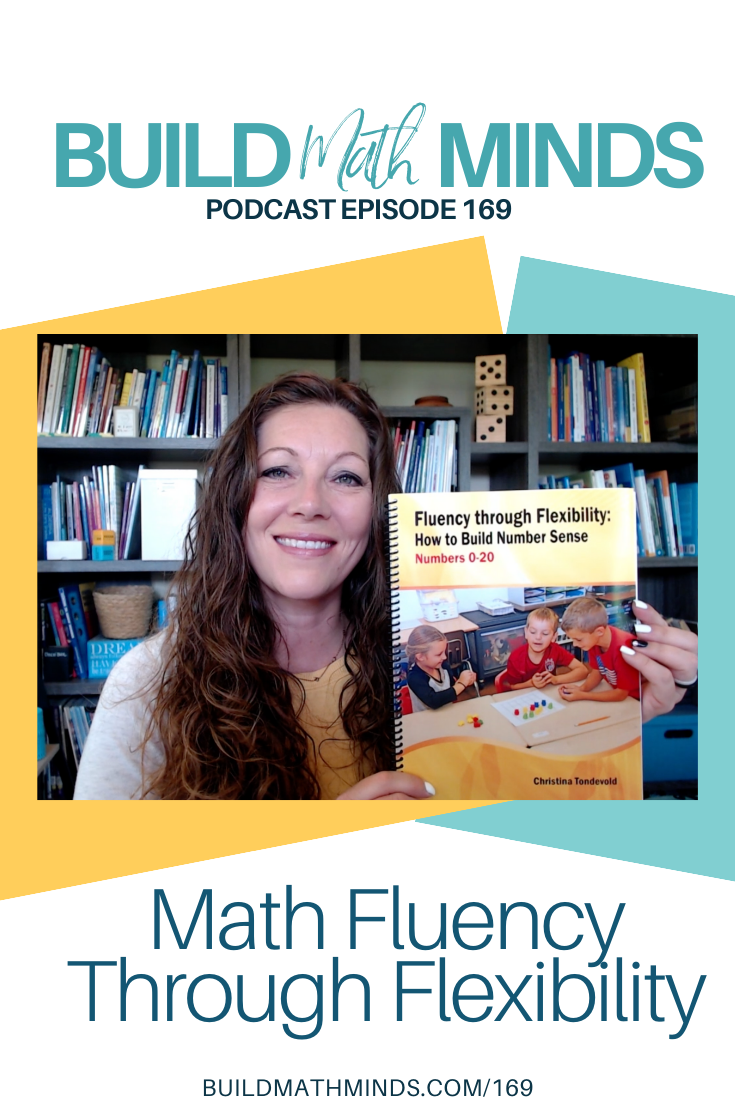Fluency Through Flexibility: How to Build Number Sense. Numbers 0-20 by Christina Tondevold
Enroll in The Flexibility Formula K-2
Enroll in The Flexibility Formula 3-5
Welcome fellow Recovering Traditionalists to Episode 169: Math Fluency Through Flexibility
Before we get into the episode, this week’s positivity comes from a paper sent in by a participant in one of my Flexibility Formula courses:
This course was one of the most helpful and practical professional development experiences that I’ve had in my 18 years of teaching. I have to say that as a teacher who has always loved to teach reading and writing, I am now most excited to plan and teach math, as I am energized by the daily growth I see in my students as well as my own growth as a teacher. –Julia 4th grade teacher
I’ll be opening up registration to my online courses for teachers, The Flexibility Formula, which are all about how kids in K-5 build their flexibility with numbers. We have some special gifts to people who enroll early but the only way to get the link to enroll early is to be on the waitlist for the courses. You can go to BuildMathMinds.com/courses then click on the link of the course you are interested in to learn more and join the waitlist or go to the show notes page for this episode and I’ll have each course (the K-2 and the 3-5) linked up for you.
Back in 2014 I wrote the book Fluency through Flexibility: How to Build Number Sense for Numbers 0-20. That book is all about building students’ flexibility with the numbers 0-20 to help them build their fluency with addition and subtraction within 20. We all want our students to be fluent in math but we often spend too much time on the end product (getting correct answers) instead of the underlying foundation needed to get that end product (students’ number sense). I had originally started writing the book to help teachers with fact fluency and helping their students develop strategies. However, every time I tried to write about getting students to that end product of using strategies to be quick with their facts I kept thinking about the underlying number sense kids need in order to make sense of what they were doing.
I later turned the ideas from that book into an online course for K-2 teachers and then was asked, what about older students. So now we have The Flexibility Formula K-2 and The Flexibility Formula 3-5 that delve into how to lay a foundation of number sense for your students that helps them become fluent with mathematics: Math Fluency Through Flexibility.
We’ve all probably experienced it ourselves or at least seen it in students; the facade of fluency. It’s when we’ve memorized something to get correct answers but we didn’t truly understand it.
On page 2 of Fluency Through Flexibility book I wrote:
“Learning your ‘facts’ can be done by memorization. But if we want children to be FLUENT with their facts, then we need to focus on developing their flexibility, not just their memorization capabilities. We can memorize anything for a short period of time but what we should really be trying to get our children to do is RECALL their facts. When a child cannot instantly pull a ‘fact’ out of his memory, he will revert back to counting on his fingers if he does not have a flexibility with numbers. So, how do we recall information quickly if it is not ‘memorized’? The more connections we make to information the easier it is to recall that piece of information.”
I go on to show an example of some of the connections kids should be building around the fact 6 + 7
My book is for early elementary kids but I’m working on one for grades 3-5, because the idea about Fluency Through Flexibility is for all grades. It’s the idea that when we build a child’s flexibility with numbers they become more fluent. That’s why I created my online course for elementary educators, The Flexibility Formula. We need to spend time on building a foundation of number sense and helping kids build connections, however our textbooks typically don’t help us with that. Inside the course I give you the 8 Number Sense Concepts kids need to build, information on how to observe to see if students have them or not, what types of connections we should be helping them build, and then I give you experiences you can provide in your classroom to help your students build their flexibility with numbers. If you are wanting to get started on building fluency with your students by working on their flexibility, enroll in The Flexibility Formula. There is a K-2 and a 3-5 course and registration is only open for a few more days. Go to BuildMathMinds.com/enroll, select which course you are interested in and get enrolled.
And if you aren’t able to take the course right now, I’d encourage you to start investigating how to build your students’ number sense because that is the key to building math fluency.
Until next week my Fellow Recovering Traditionalists, keep Building Math Minds.




